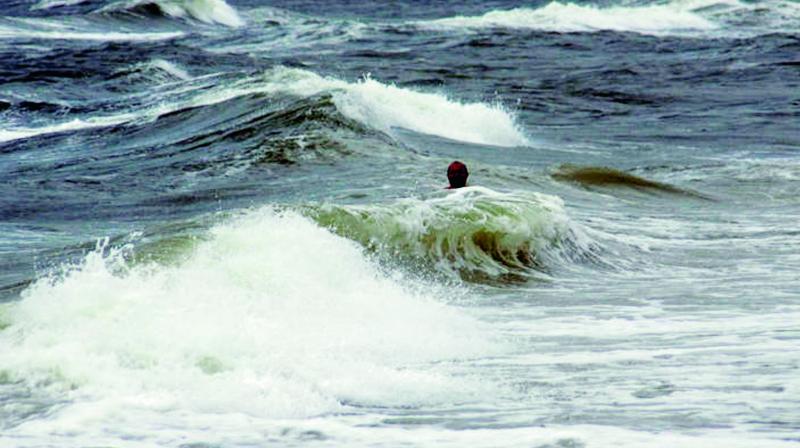The deep sea of blues

Drowning is a neglected public health threat, not just in India but across the world and the somber figures say it all. According to World Health Organisation’s Global Report on Drowning, around 1,008 people die every day around the world due to drowning.
Recently, 27-year-old MBA student Shravan Kumar Reddy from Bellampalli town accidentally drowned in the sea in Florida over Easter weekend. Closer to home, a first-year Intermediate student drowned while he was allegedly taking a selfie at a beach in Vishakapatnam. And in yet another incident, a strong current at the Bangarammapalem beach swallowed two friends.
Even with swimming and safety classes available in many countries, a large number of people drown every year. Experts say that youngsters are more likely to overestimate their skills and underestimate dangerous situations. Although they often lack experience, adolescents tend to feel invincible. The part of the brain that controls complex decision-making and impulse control is still developing at this age, making teens more likely to take risks. In addition, teens typically feel like they are being judged by their peers and may try to keep up with them or impress them even if they don’t have the swim skills and experience.
According to Zubair Mohammed Iftekhar, who established India’s first swim university, the most common reason behind drowning is peer pressure.
“This usually comes into play when friends or cousins go for a beach outing and get the person in water. But once the fun begins, people forget about the individual who doesn’t know swimming and this leads to a fatal end to the trip.”
The spate in drowning incidents also reveals that people don’t know the correct way to rescue someone from drowning. Often, those trying to help others end up meeting the same fate. A couple of months ago, 20 students of a private college had gone to the Veerabhadra temple in Lepakshi, Andhra Pradesh, to celebrate the birthday of 20-year-old Chakrala Praveen. Tragically, four of them, including Praveen, drowned while trying to save one of their friends, Sameer, who had fallen into the nearby lake.
“Although every drowning incident is different,” says Wing Commander Yashwant Singh Panghal of the Indian Air Force and member of the Air Force Swimming, “one way they play out disastrously is if the water appears calm. A rescuer may think his swimming skills are sufficient to allow him to cover the distance to the distressed person in peaceful-looking waters. It’s what happens next that causes the problem.” Surprisingly though, around 66 per cent of the victims are good swimmers.
Swimming in the sea is completely different from how it is in a pool, mainly because waves are involved which can move or drift an individual in a different direction.
“There is a huge misconception that open water swimming is a more beneficial workout which is not true. This sometimes misleads intermediate swimmers or people who are looking for quick results and have no idea about how the sea behaves,” says Zubair.
He also adds, “Open water swimming is a sport which has to be undertaken with supervision once you are confident with your level of swimming. A number of things have to be understood and kept in mind to have a safe open water swim experience.”

